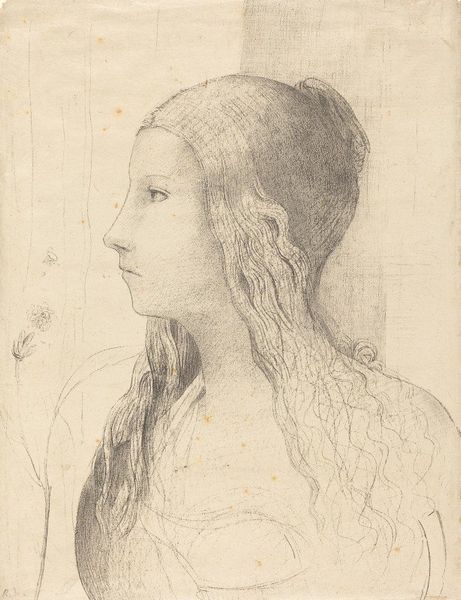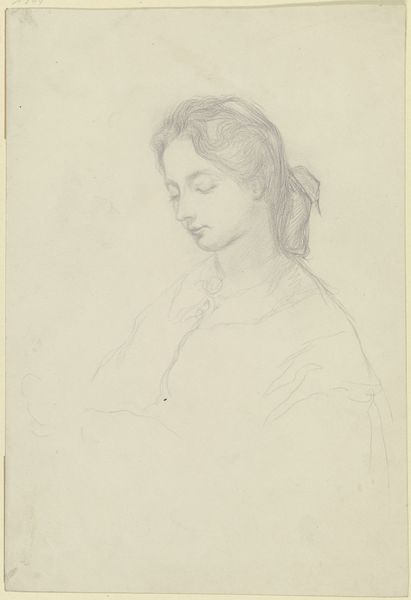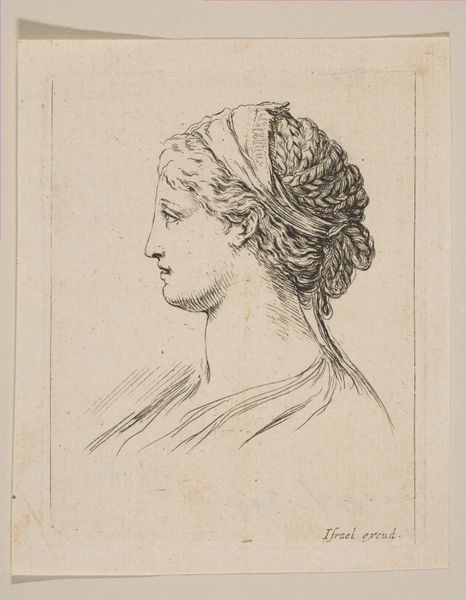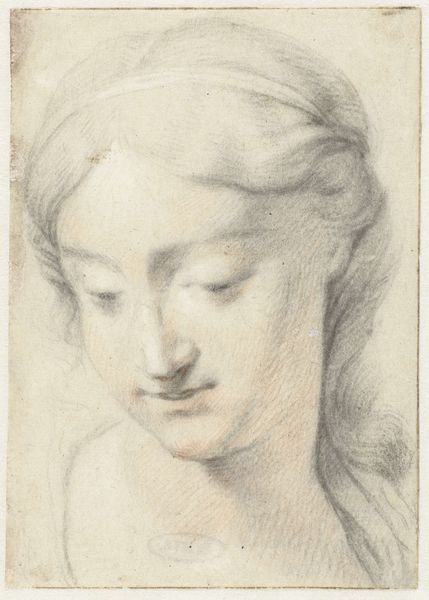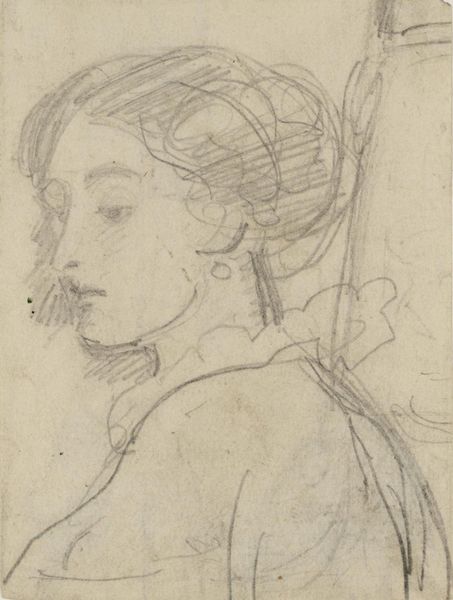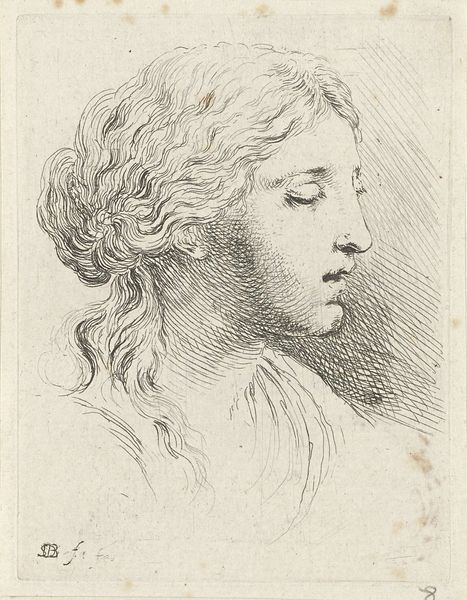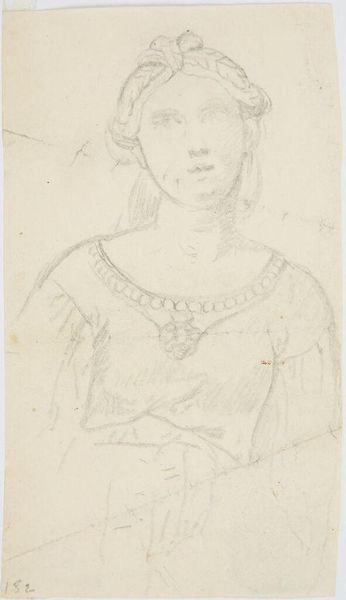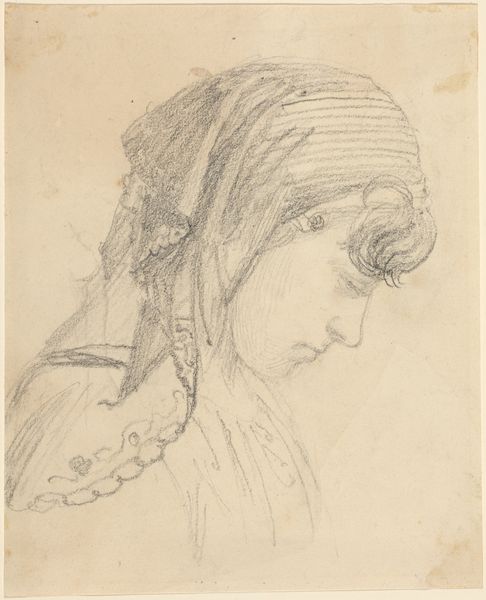
drawing, pencil
#
portrait
#
drawing
#
amateur sketch
#
facial expression drawing
#
light pencil work
#
pencil sketch
#
figuration
#
personal sketchbook
#
idea generation sketch
#
ink drawing experimentation
#
romanticism
#
pencil
#
sketchbook drawing
#
portrait drawing
#
pencil work
Copyright: Rijks Museum: Open Domain
Curator: We’re looking at “Vrouw met een doek in het haar, mogelijk Maria,” which translates to “Woman with a cloth in her hair, possibly Mary.” It’s a pencil drawing, created sometime between 1816 and 1852. Editor: Immediately striking – there’s a gentle stillness. The subtle gradations in the pencil work really contribute to this sense of peace and inward reflection, it is quite evocative in spite of being minimal. Curator: Indeed, the use of line is particularly interesting. Notice how the artist utilizes hatching to create volume and shadow, especially around the face and the drapery. The contours are soft, almost ethereal, which aligns with Romantic ideals of the time. Editor: It’s interesting to consider the material constraints as well. Pencil, relatively inexpensive and easily accessible, lent itself to sketching and preliminary studies. How might the perceived preciousness of, say, oil paint have altered the artist's approach and possibly our interpretation of this figure? Curator: A fascinating question! Thinking about semiotics, her closed eyes might symbolize contemplation, perhaps devotion, if we accept the possibility of her being Mary. Or even dreaminess – consider it from the perspective of portraiture in the early 19th century. It represents something much more introspective than a typical Neoclassical approach. Editor: Precisely. This very pencil and paper allowed for exploration and idea generation—this intimacy reveals artmaking not as a rarified skill, but grounded in readily available resources, and suggesting the democratized act of drawing itself. Was this destined to be an artwork or remained as simple experiment is fascinating as well. Curator: That certainly shifts our understanding from an artwork presented with solemn grandeur into one where we understand how this work embodies both technical refinement, as well as this very sense of personal reflection as well, achieved in just simple pencil. Editor: It adds another layer. What was born from accessible and mundane elements gives an intimate peak to artistic investigation during its period of creation. Curator: Well, thinking about composition and Romantic era sentiment as the end, and the pure utility of graphite at the beginning offers much to admire about this specific artwork!
Comments
No comments
Be the first to comment and join the conversation on the ultimate creative platform.
